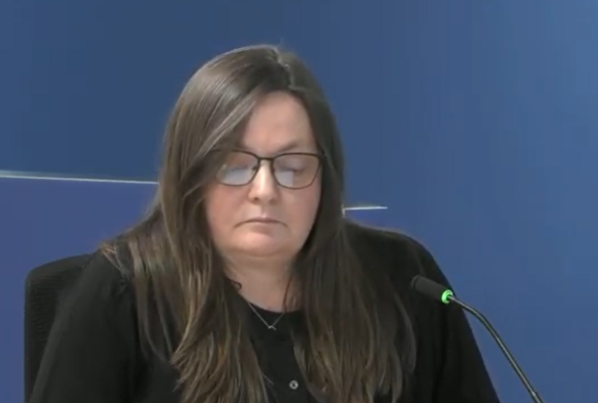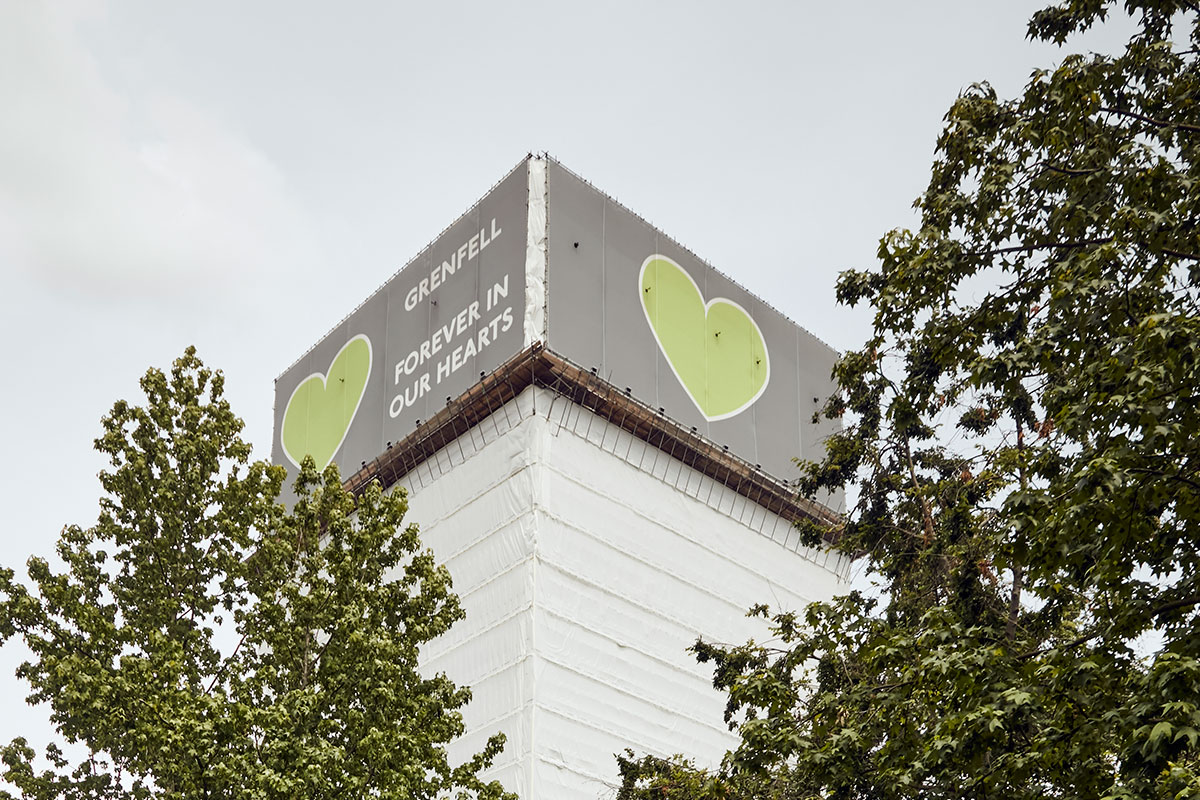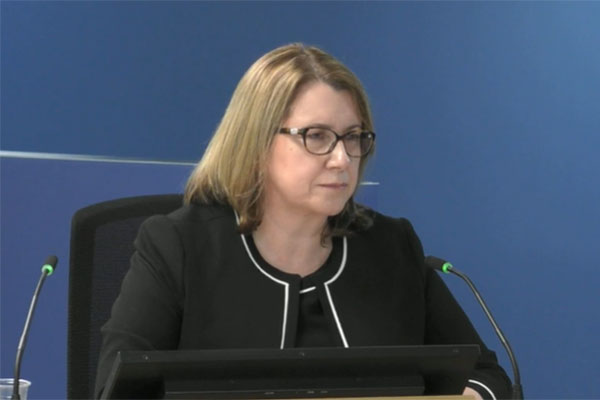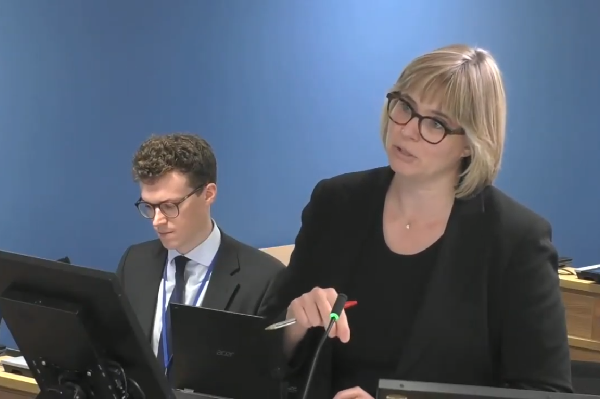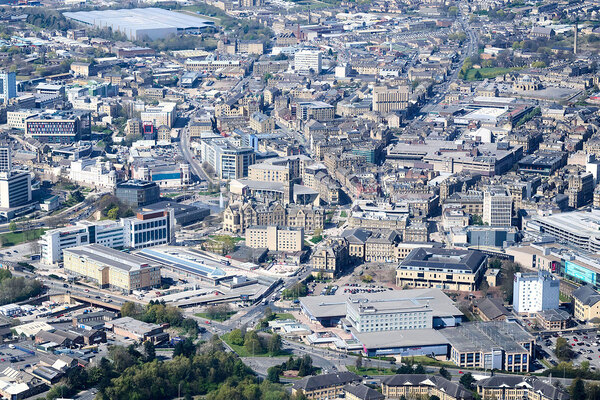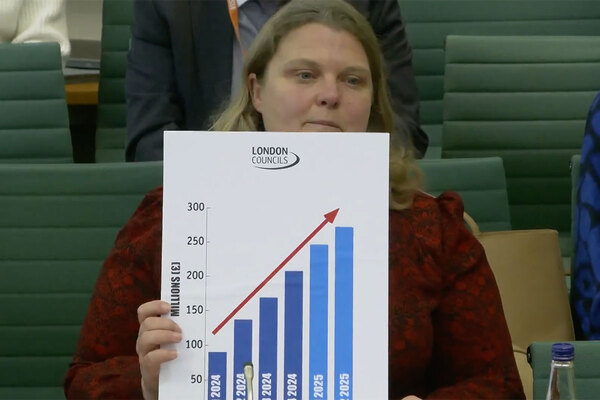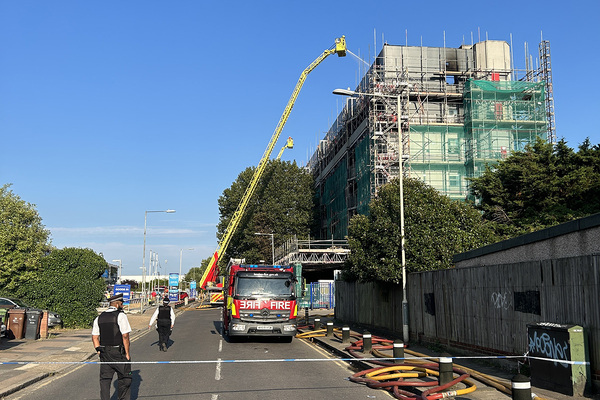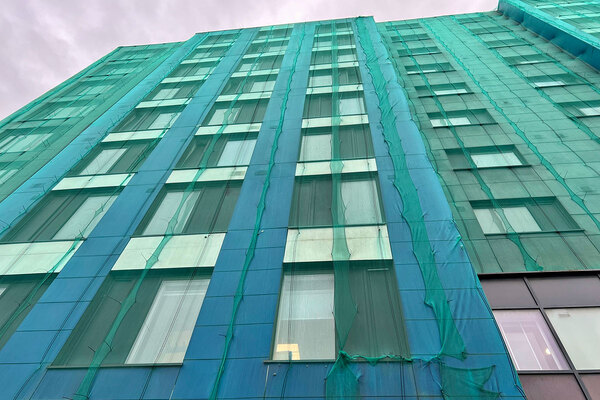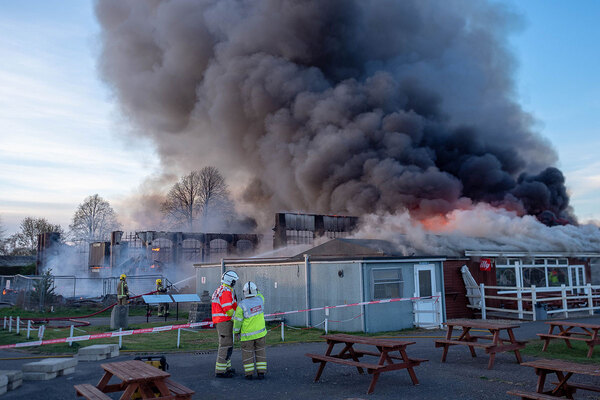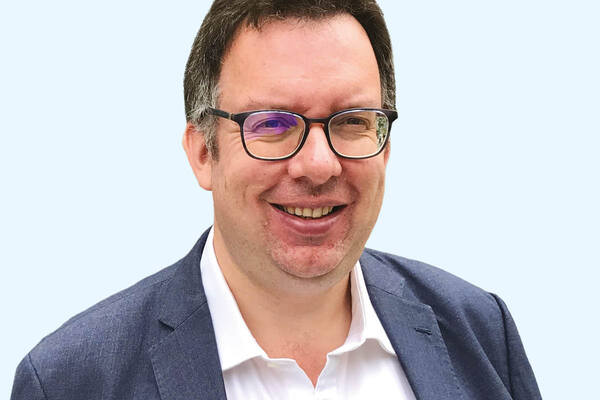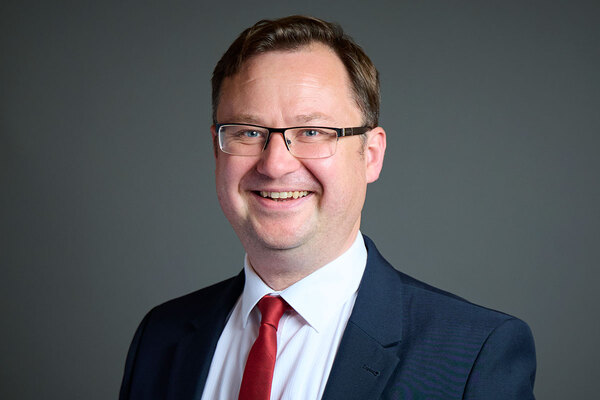Government failed to warn of ACM cladding dangers despite 2001 test showing ‘catastrophic’ fire
The UK government failed to warn the building sector about the potential dangers around aluminium composite material (ACM) cladding despite a test in 2001 which showed a “catastrophic escalation” of fire, the Grenfell Inquiry heard today.
Giving evidence today, Dr Sarah Colwell from the Building Research Establishment (BRE) was grilled about a series of tests carried out on cladding systems in 2001, 15 years before the Grenfell Tower fire killed 72 people.
One system featured the same polyethylene-cored ACM later used on the tower. It failed dramatically, with flames burning 20m high after just five minutes.
But no warning was issued about the use of the product and official guidance was not amended to ban its use.
The material was classified as Class 0, the standard for external surfaces of walls, in Approved Document B, official government guidance. This standard – widely understood to apply to cladding panels – was never removed from guidance before the Grenfell fire, despite repeated warnings.
The inquiry has already concluded that the ACM cladding was the primary cause of rapid fire spread on the night of the blaze.
Asked by Kate Grange QC, counsel to the inquiry, what her response was to the “catastrophic escalation of fire” seen during the test, Dr Colwell said she was shocked at the speed at which it took off and that government officials had also been “concerned about the performance” of the material at the time.
She added: “[After the test] I didn’t think ACM would be suitable for use in any high-rise buildings; I don’t think anyone did.”
However, despite the concerns, she said she wasn’t aware of the government taking any action to warn the industry of the potential combustibility of the product.
She added: “I wasn’t aware that they [the government] hadn’t [taken any action] at the time but I’m still shocked that it is and was used, so yes, on reflection, I’m shocked they didn’t follow it up at that point.”
The ACM test was part of a series of tests carried out on commonly used cladding materials and systems in 2001.
It came as part of work being carried out by the UK government after recommendations by a select committee of MPs following the Garnock Court fire suggested that it review cladding systems in use.
The Garnock Court fire took place in a block in Irvine, Scotland, in 1999. One man died and five others were injured. Flammable cladding was deemed responsible for the fire spread.
Of the 14 cladding systems tested by the BRE, only four passed, with ACM PE the worst performing of all materials presented.
A table of the test results showed that it took only three minutes for the fire to penetrate the whole of the exterior part of the ACM PE cladding system, with flames entering the external insulation within four and half minutes. This was half the time that it took the next-worst performing material.
A timeline showed molten aluminium dropping off the front face of the ACM system after just three minutes and flames reaching 20m high after just five minutes. The test had to be fully extinguished for safety reasons after just seven minutes.
When asked if she or the BRE had considered alerting local authorities or building control about the “obvious dangers with using ACM panels”, Dr Colwell said: “I had made the department aware of the outcomes and they were obviously in a position to take the dissemination route to do that.”
Ms Grange then pushed her on whether she had acted to alert anyone. Dr Colwell said she hadn’t and had simply passed the information on to the government, stating that they were in a better position to issue any warnings.
According to the latest building safety data, 449 buildings across the UK have been found to have ACM cladding on their walls, with many of those systems, including the one at Grenfell, likely to have been installed after 2001.
Earlier in the day, evidence focused on another part of the BRE’s contract with the government to look into external wall facades following the Garnock Court fire.
As part of the contract, the BRE was expected to carry out a survey of existing high-rises in Great Britain in order to assess what cladding systems were being used and produce a database with the results, highlighting market share of products.
In total, the BRE survey was sent out to just 45 councils, with the organisation receiving just 13 full responses.
The report also found that the use of fire barriers in buildings were very sporadic, with the majority of respondents stating that they were “unknown” or “only fitted when asked”.
Tens of thousands of leaseholders across the country are currently facing huge bills to fix issues such as missing or defective fire breaks.
Dr Colwell said the cavity barrier issues would have been assessed by the government as part of the report, but that she wasn’t aware of any “direct action” that was taken regarding it.
Yesterday, the inquiry heard that a fire in 1991 in Knowsley Heights, Merseyside, featured combustible glass reinforced plastic (GRP) – a fact which was not spelled out in either the BRE’s original report into the blaze or a summary published in 2016.
The fire, which started outside the building in a bin, spread right up to the roof of the building, with flames issuing from windows on all floors by the time the fire brigade arrived.
The original report said the building was clad with “Class 0 GRP rainscreen cladding”, but drew no attention to the fact that this was combustible.
In fact, it said a few paragraphs later that cavity barriers were not fitted and noted that “under [official] guidance at the time [cavity barriers] could be omitted where the cladding system was non-combustible”.
“Can we agree that the clear inference of that paragraph is that this was a non-combustible system, otherwise why would that sentence read as it does at the end?” asked Ms Grange (pictured above).
“I’m sorry, I can’t speak for what the authors were suggesting with that,” replied Dr Colwell.
The same description was used in the summary report produced by a graduate engineer in 2016, which Dr Colwell was listed as having signed off. She explained this by saying it simply followed the original report, but did not endorse it.
The report listed several factors for the rapid spread, including the use of combustible window frames, but omitted any mention of the combustible cladding.
An Inside Housing investigation into this fire, published last July, revealed an internal government memo which referred to a plan to “play down the issue of the fire”.
Knowsley Heights was clad using government funding in a pilot project to test the use of rainscreen cladding systems for council blocks.
Dr Colwell was also asked about a report written by Dr Raymond Connolly in 1994, in the aftermath of the Knowsley incident, which involved 10 tests on various cladding systems at the BRE’s facility in Cardington.
This report raised clear issues with the use of combustible Class 0 cladding. One system featuring Class 0-rated polyester cladding was said to have experienced “unlimited vertical spread of fire over the full height of the test facility”.
The report said: “It is clear from the experimental work undertaken at Cardington that a cladding material achieving a Class 0 rating may suffer extensive surface burning. This burning often spread to the top of the test building (some 9 metres) and would have spread further if possible.”
“In the light of this report, did you at any stage consider the reliance in Approved Document B … on [Class 0] to be a matter that needed to be addressed?” asked Ms Grange.
“Yes,” Dr Colwell replied. “The pick-up from what I was being told and had been explained to me suggested that that was what was going to be addressed, because they had found evidence that it wasn’t appropriate.”
The inquiry continues.
Additional reporting by Pete Apps
Sign up for our weekly Grenfell Inquiry newsletter
Each week we send out a newsletter rounding up the key news from the Grenfell Inquiry, along with the headlines from the week
Already have an account? Click here to manage your newsletters
